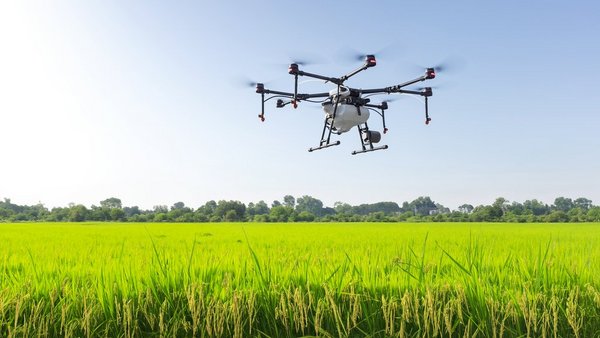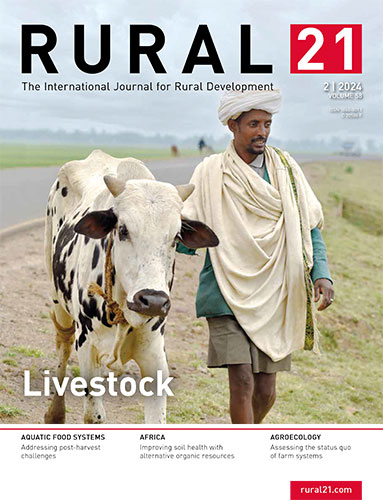- Share this article
- Subscribe to our newsletter
Deploying drones in India’s agriculture
Agricultural drones can apply pesticides and fertiliser tailored to individual plots and map the state of cultures. The drones have long ceased to be limited solely to major companies, and they make up for a lack of labour.
In 2022, the market for drones in agriculture amounted to roughly 7.9 billion US dollars, and it is to grow by an annual 20 per cent up to 2032. This would then mean a global turnover of 48.8 billion US dollars. In addition to population growth, one major market driver is the spread of precision agriculture.
These trends are complemented by policies aimed at enhancing the effectiveness of drones in agriculture. For example, India’s Prime Minister Narendra Modi launched the Namo Drone Didi package to boost women farmers’ skills in this respect in March 2024. More than 15,000 women farmers are being trained to operate drones and distribute fertiliser and seed with them. The women can also offer other farms these services and thus earn their own additional income.
Furthermore, the drones are to transport medicaments and food in remote regions. For the women, the drones are free of charge. They receive a loan totalling 8,000 rupees (roughly 80 euros) at a subsidised interest rate for their business model.
Thus India is spearheading the use of drones, which are above all gaining significance in South and Southeast Asia. The Global Market Insight drone survey adds that the development of hardware and the development of software respectively account for driving two thirds and one third of the market trend.
However, whereas politics can promote the use of drones in agriculture, it can also result in the opposite. Regulations limiting application, certification and flight restrictions are obstacles which farmers have to keep in mind when employing drones, despite their obvious advantages, including the enhancement of productivity and business management.
India has fewer reservations regarding the new technology. The Indian Farmers Fertilizer Cooperative (IFFCO) seeks to make use of drones throughout the country to spread pesticides. Major corporations as well as many start-ups across the world are opting for artificial intelligence and data clouds to make the employment of drones more efficient economically.
Roland Krieg, journalist, Esens, Germany





Add a comment
Be the First to Comment